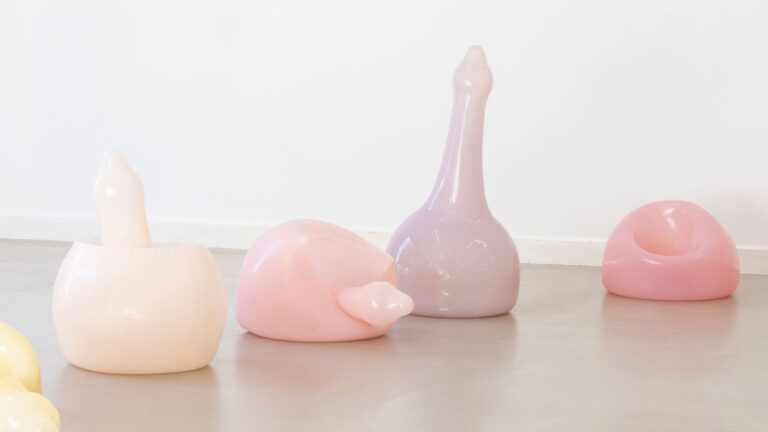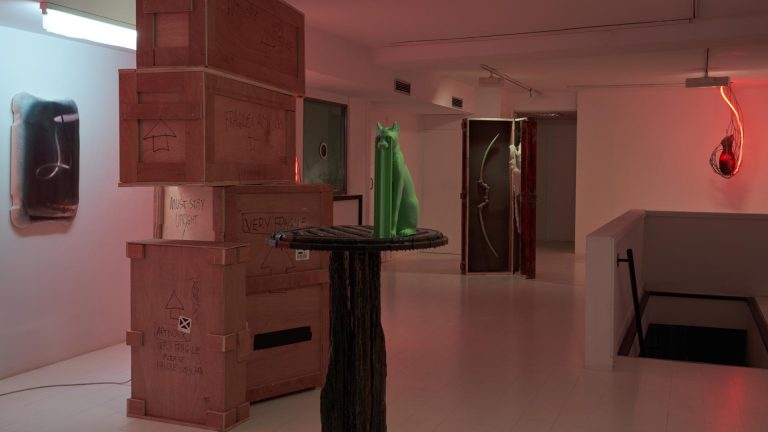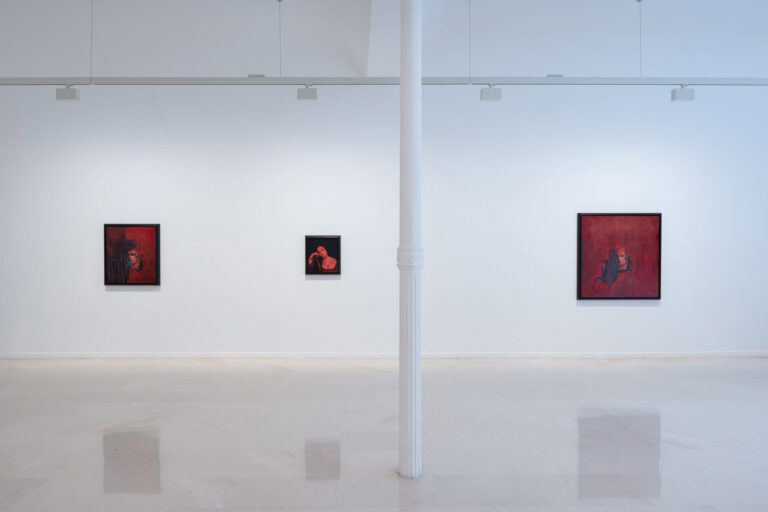There are currently around fifty Boomerangs in operation around the world, not counting the attraction that in 1990 came to Barcelona with the promise of renovating the already decaying Montjuïc amusement park during a period of major urban development in the city for the 1992 Olympic Games. After eight years of spinning on the top of Montjuïc, Boomerang was sold to the Six Flags park in New Orleans, where it was renamed Zydeco Scream, in reference to a creole music genre featuring the accordion.
In 2005 its operation was again interrupted by a time of crisis. The screams that had hitherto echoed from its rails were replaced by silence and the long queues by the vegetation growing between its structures. Part of its body was submerged in water and the other part stretched towards the sky. Its robust and curvaceous body-machine had been easily defeated by the circular dance of Hurricane Katrina. Immobile, it would then take on new roles, serving as a backdrop for post-apocalyptic Hollywood movies or as a refuge for wild animals that had not previously inhabited the region. The animals, whose movements had been translated into mechanical impulses in the attractions— octopuses, frogs, horses—acquired flesh, muscle and venom.
Collapse, which in an amusement park is only a symbolic image associated with the idea of thrilling excitement, reclaimed its place in the realm of reality. Inversions, previously restricted to vertiginous machines, would now be driven by atmospheric forces.
“Inversión Cobra Roll” is an exhibition organized around the notions of vertigo, torsion and decadence evoked by the sculptural, machinic and semantic qualities of the Boomerang, a back-and-forth roller coaster design composed of two inversions and a loop whose trains run half of the circuit forward and half backwards. These qualities, potentialities and connotations reappear in the exhibition space detached from their referent through the works of five artist duos who reflect on the relationship between structure and mobility and use the body as a point of contact.
How can we think about ideas of sustenance and sustainability through movement? And to what extent does the loss of orientation instrumentalise us in conceiving other forms of language and action?
Roser Corella and David Bestué present “La Carpa”, a film that investigates the process of construction, use and disappearance of a demountable theatre designed by the Murcian architect Emilio Pérez Piñero and installed at the end of the sixties in L’Hospitalet de Llobregat. Made of an iron structure with two vaults, today it only survives in the memory of those who were able to one day enter its installations.
Mònica Planes and Àlex Palacín start from an investigation into sculpture, public leisure spaces in Madrid and Barcelona and the performativity of materials to manipulate the shapes and structures of objects and bodies, distorting scales and inviting us to play like a fruit.
From dance as a self-defense training, Davi Pontes and Wallace Ferreira propose to rave the racial, highlighting the urgency of the collapse of modern Western thought. The duo projects fictions of survival through body actions that break the notion of choreographic sequence and approaches the thought of the artist and philosopher Denise Ferreira da Silva to conceive a video “without the ghost of linearity”.
By installing a rehearsal wooden floor that, for 15 years, has been part of the creation of self-managed artistic contexts in Barcelona (La Poderosa and La Porta), Noela Covelo Velasco and Víctor Ruiz Colomer reflect on structures from an articulation between their material and social perspectives. They also promote interventions in space, working with structural elements such as the walls and lighting: they unite the horizontal and vertical planes through the grey color with a finish that reinforces the artificial character of the exhibition space and install lamps made from cuts of the planks and sets of lenses and lights that project the image of their internal structures.
By adding the word “yet” to the title initially proposed for the exhibition, “Standing but not operating”, Luiza Crosman and Maíra Dietrich propose an opening to the meaning of immobility and paralysis, treating language as an active force in the resumption of movement. This linguistic operation occurred in parallel to the desire to reactivate an object that, while capable of bridging their interests, had been absent for some time from their individual practices. Printmaking, a technique that today occupies a position of obsolescence and the language both Crosman and Dietrich trained in, would be their common idiom, and the press, the mediator of their conversations.
In Cobra Roll Inversion, we explore the retro-progressive orientation presenting the archive of the exhibition “El palacio de los proyectos”, by Ilya and Emilia Kabakov, which was shown between 1998 and 1999 in Madrid. The exhibition consisted of occupying the Palacio de Cristal del Retiro, a symbol of progress and modernity, with another palace, in this case one of circular architecture and a structure of fabric and wood. Along a spiral route, 65 utopian projects conceived by the artists for life on a planet in crisis were distributed.












































